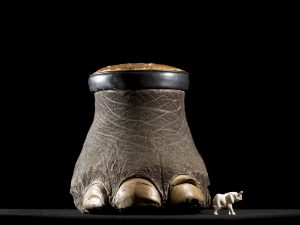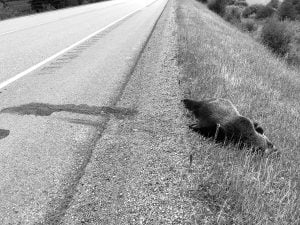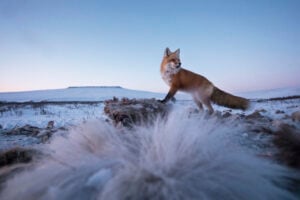The fossilized remains of North America’s oldest known scorpions turned up in some unexpected places: quarries, landscaping projects and patios.
Finding a specimen as fascinating as those ancient scorpion moults might seem unlikely. But the Royal Ontario Museum actually hears about enough finds, or potential finds, from everyday people that it runs a public identification clinic every two months.
Janet Waddington, departmental associate in the ROM’s department of natural history, explains the significance of the scorpions originating from Ontario’s Bruce Peninsula and what people should do if they think they might have found an exciting fossil in their backyard.
What makes these scorpions different?
Scorpions, especially the oldest scorpions, have long been thought to be aquatic. These ones have a leg that ends in a shorter element that suggests it could be placed flat on the ground, so they could in fact support their weight out of water.
How did the remains come to you?
It’s a story that we really enjoy because we get a lot of public inquiries. In 1991, I got a phone call from somebody who was having landscaping done in her garden in Toronto. She came down and pulls the fossil out of her bag. It was a scorpion. I just about fell on the floor because it was unexpected and incredibly rare. The next spring, a foreman on the same job called me and asked, ‘What are the chances of finding another fossil like that?’
Shortly after that I got a phone call from a professor at a university in New York. He had been vacationing in Tobermory and had gone into the interpretative centre at the national park and they had a bunch of fossils laid out. One was incorrectly labeled sea scorpion, which is a totally different group of animals, and he brought it to our attention. Then we got about five from quarry workers and owners. We got two or three from flagstones people were getting ready to put into their patio.
What are your most common public fossil inquiries?
In southern Ontario, they’re usually invertebrates (with some exceptions in some places there are very old fish remains) so things that didn’t have backbones. They include arthropods (the most common kind are trilobites that look a little bit like pill bugs), echinoderms (sea stars and sea lilies), corals and brachiopods (a kind of shellfish).
These sound impressive even though they’re common!
Just because it’s common doesn’t mean it’s not important. We have an identification clinic every two months at the ROM. There’s always something interesting, you’ll get something that’s preserved a little bit differently or that’s really complete or that’s a bit odd to get from a particular area. It tells you a little bit more about what the Earth was like back then.
If people think they’ve found something interesting in their backyard, what should they do?
Your first question is: where’s your backyard? Have you had anything brought in from somewhere else? These patio stones, the first thing we asked, was ‘Where did you get your rocks?’ I have a geological map of southern Ontario in my head and I start thinking about what I’d expect.
If you can bring a fossil to our ID clinic that’s great but if it’s not possible you can email a picture to us — it needs to be a really sharp picture with a scale in it. No fuzzy blobs.
Are there any visual clues?
Remember how fossils form: It’s the bits that didn’t rot away. You’re looking for things that were once bone, shell or a material like coral.
I guess that’s the most common mistake that people bring to us. They’re convinced they’ve found a little dead bird or something but they’re bringing us a mark on a rock that they think looks like a bird. People will bring in an interesting shaped rock that turns out to just be an interesting shape rock. I personally love interesting shaped rocks, so I don’t mind people bringing them in. People needn’t ever be embarrassed. You can’t tell people exactly what to expect because people find things that you don’t expect — like our scorpions.





